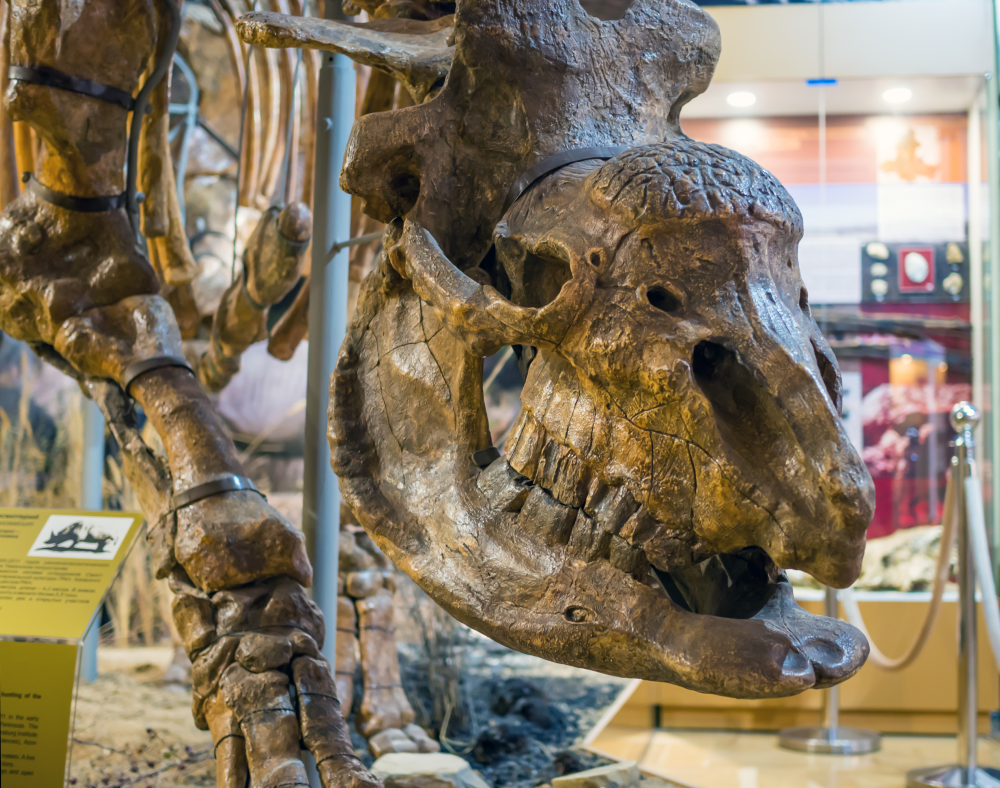A beast that weighed in at around 3.5 tonnes once stomped across the grasslands of Eurasia, known as the Elasmotherium. It’s been coined the Siberian unicorn for the frankly outrageous horn atop its head, unsurprising as an ancient ancestor of the rhinoceros.
What is surprising is that this near-mythical beast may have walked the Earth at the same time as humans. Once thought to have gone extinct around 200,000 to 100,000 years ago, recent dating of fossil evidence bumped its extinction to a mere 39,000 years ago.
Nice to meet you, Elasmotherium.
While a relative of the rhinoceros, the Siberian unicorn was more comparable in size to a modern-day elephant at around 4.5 meters (15 feet) long. Perhaps most impressive, however, was its horn that could add 2 meters (6.5 feet) to its face. It was probably made of keratin, like the horns on rhinos alive today, but we’ve yet to find a preserved example as keratin doesn’t survive in the fossil record as well as bone.
One of the most remarkable Siberian unicorn fossils to date was a complete skull that’s now housed at the Natural History Museum, London. When this rare find was dated, Professor Adrian Lister and colleagues faced a surprising realization: the fossil was less than 40,000 years old.

As skulls go, this thing was pretty impressive.
Image credit: Vpales / Shutterstock.com
The shock result wasn’t alone for long. After teaming up with scientists across Russia and the Netherlands, the team ascertained that there were many fossils around the same age, blowing the idea that they had gone extinct 200,000 to 100,000 years ago right out of the water.
The study was also able to establish that Elasmotheriinae separated from Rhinocerotinae right back in the Eocene. This meant that by the time the Siberian unicorn was kicking the bucket, it marked the extinction of an entire subfamily.
It seems it endured until around 39,000 to 35,000 years ago, which is about the same time Neanderthals were going extinct. As for what triggered the Siberian unicorn’s demise, there are arguments to be made for both sides of a compelling coin, but environmental drivers appear to be the most likely.
“The persistently restricted geographical range of Elasmotherium (also probably linked to its specialized habitat), as well as the low population size and slow reproductive rate associated with its large body size, would have predisposed it to extinction in the face of environmental change, while the ecologically similar, but much smaller species (S. tatarica) survived,” wrote the study authors.
“The extinction of E. sibiricum could in theory have been exacerbated by human hunting pressure, given the replacement of H. neanderthalensis by H. sapiens in Eurasia around 45–40 ka58. [But] there is currently no record of the species’ remains from any archaeological site, and the very few suggested depictions of Elasmotherium in Palaeolithic art are unconvincing.”
So, phew on that count, but what about the woolly mammoth?
Source Link: 39,000 Years Ago, A Siberian Unicorn Lived Alongside Humans